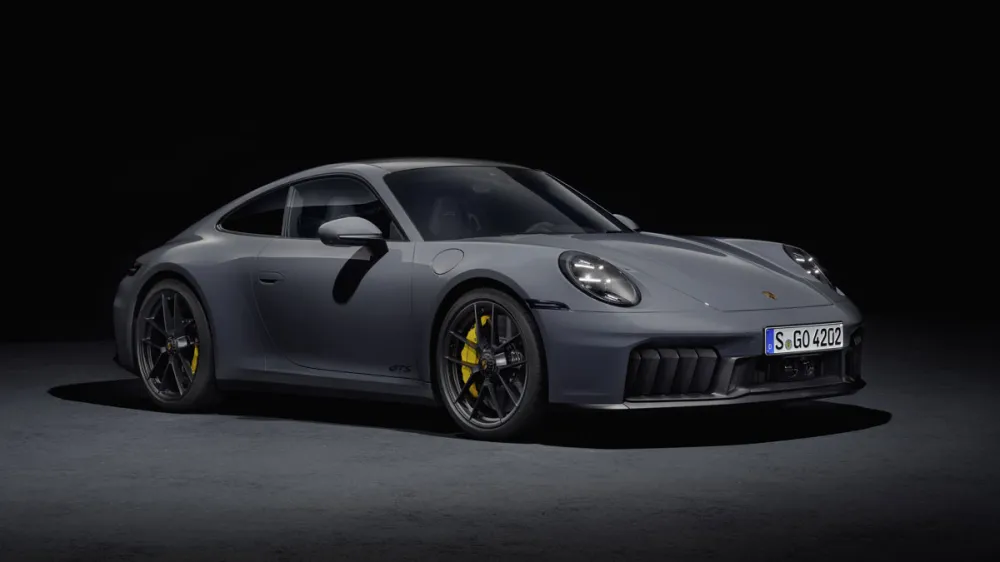The new 911 GTS pairs a 3.6-liter flat-six with a permanently excited synchronous motor for a claimed 532 hp and 449 ft lbs of torque.
The hybridization and ultimate electrification of the Porsche 911 is an eventuality long dreaded by the vast majority of the German marque’s enthusiasts. From online forum chatter to cars and coffee klatches, the Porsche cognoscenti hold firm that the model’s flat-six power plant—air-cooled at its introduction in 1964, then liquid-cooled from 1999—is the sacrosanct heart of this timeless sports car.
While Porsche has insisted that the 911 will be the last model to switch to a fully electric power-train configuration, the automaker also acknowledged—at the launch of the current 992 series—that the latest generation of the model reserved a space in the transmission case to accommodate a small electric motor, signaling a future hybrid system. That time has come with the debut of the hybrid 911 GTS model line, which comprises the Carrera GTS (opening image), Carrera GTS Cabriolet, and Targa 4 GTS.
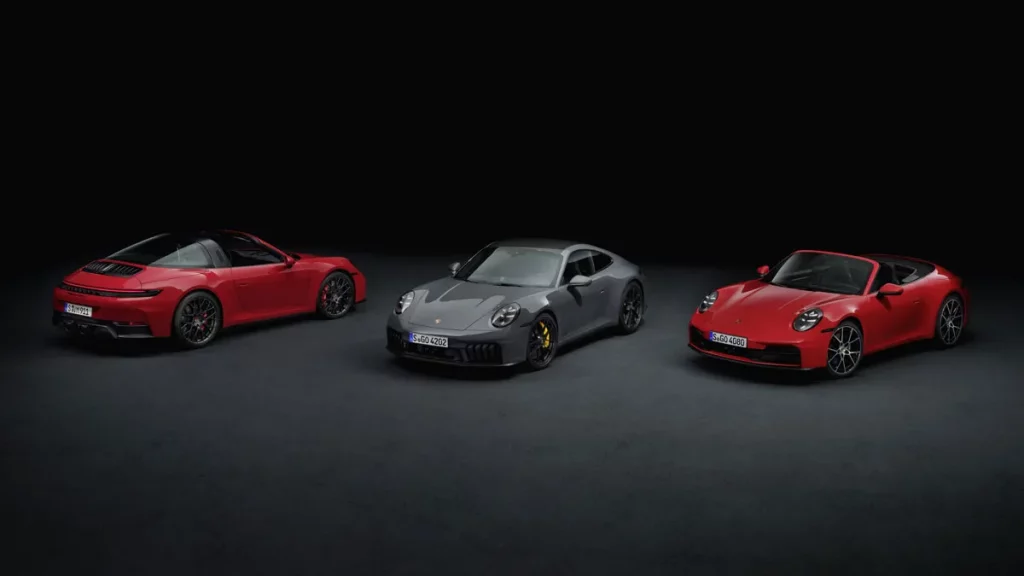
Given the rampant electrification anxiety, Porsche recently teased the hybrid 911 with a promising number: 7:16.934. That’s the new variant’s lap time around the famously grueling Nürburgring Nordschleife track, which is 8.7 seconds quicker than the iteration it replaces. Given that a lap time at the ‘Ring is a metric that enthusiasts lean on as gospel for performance legitimacy, the number is significant.
These fresh details portend a sea change in how Porsche’s flagship model is engineered for speed. The new hybrid pairs a 3.6-liter flat-six (enlarged over the outgoing GTS’s 3.0-liter engine) with a permanently excited synchronous motor—the latter nestled into the transmission. The gas engine alone is claimed to produce 478 hp and 420 ft lbs of torque; together with the electric assist, total output climbs to a reported 532 hp and 449 ft lbs of torque.
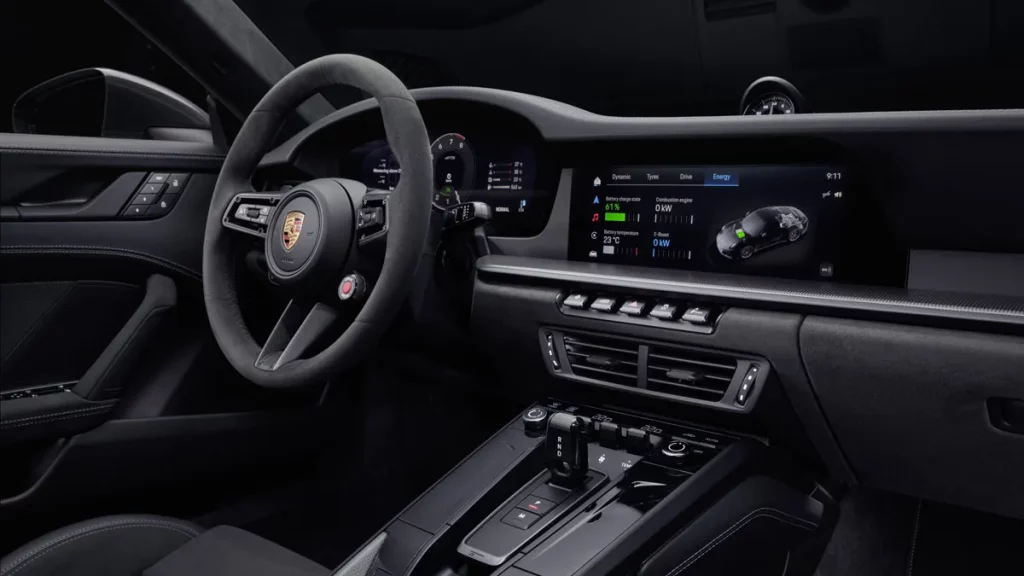
Hybrid systems notoriously add weight, a sore point for track junkies who covet every ounce shaved in the interest of going around a circuit faster. That said, the new GTS gains 103 pounds compared to its 3,433-pound predecessor, a 3 percent increase.
The new GTS power plant also integrates an electrically driven turbocharger to build boost and eliminate lag. In addition, the unit acts as a generator, drafting from the stream of exhaust gases to develop up to 11 kW of power. Meanwhile, the base Carrera model inherits the outgoing non-hybrid GTS engine, which claims a 9 hp gain over the previous Carrera. Porsche claims the new GTS hybrid achieves zero to 60 mph in 2.9 seconds, a .3 second improvement over its predecessor, and has a top speed of 194 mph.
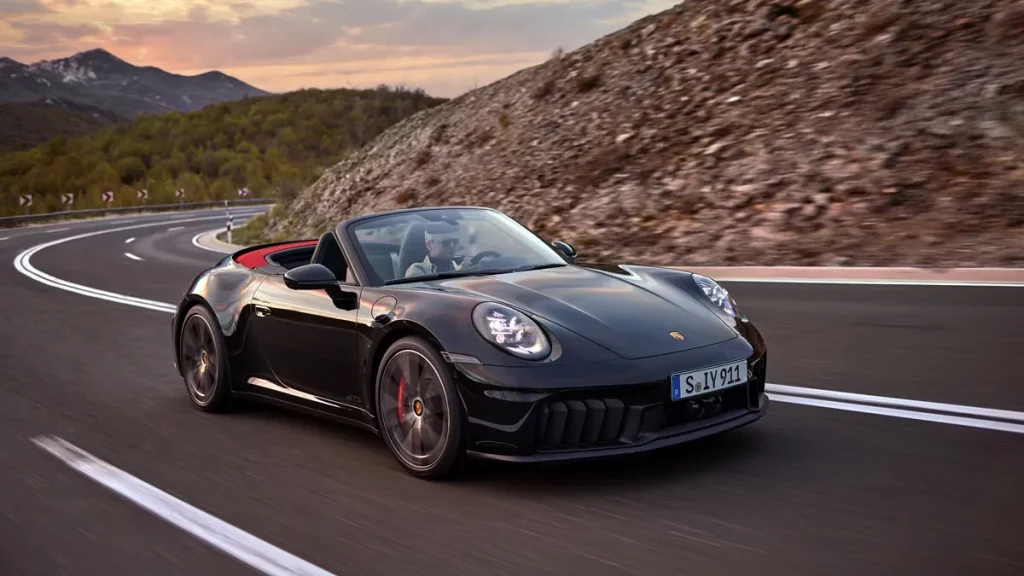
The hybrid enjoys a few suspension upgrades that include standard rear-axle steering, sport suspension with adaptive dampers and a lower ride height, and the optional Porsche Dynamic Chassis Control (PDCC), which actively controls roll using electrohydraulic hardware. The mods are not limited to mechanical features; philosophical shifts include the replacement of the iconic centrally positioned analog tachometer with a curved 12.6-inch digital screen, a move sure to enrage certain purists. Another decision sure to get tongues wagging is the fact that this GTS is only available with the eight-speed PDK automatic transmission, as the hybrid system is integrated into the gearbox case.
The new Porsche 911 GTS is priced starting at $164,900 and positioned between the base Carrera ($120,100) and the Turbo ($197,200). It will be available in both rear-wheel drive and all-wheel drive.
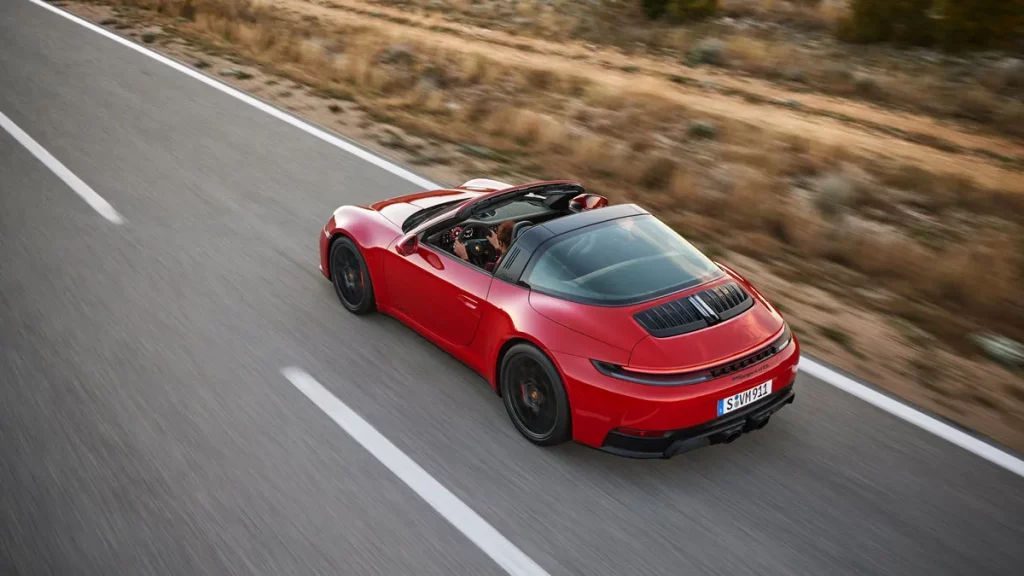
Love it or hate it, Porsche’s hybrid 911 is claimed to outperform the base model while leaving room above it for more aggressive Turbo and GT3 RS models. Yes, the hybrid might anger Porsche devotees because it leaves the coveted manual-transmission option in fewer models. And indeed, details like its digital dashboard will likely be perceived as an affront to hardcore traditionalists, as it lacks the timeless nature of analog gauges. But Porsche’s new 911 GTS is an adaptation to ever more stringent emissions regulations and a stepping stone to inevitable electrification.
As for the overall drive experience, we’ll let you know after we track test the new 911 GTS in late June. Until then, this reveal will be sure to fuel a lively debate as the industry continues to inch away from fossil fuels.

